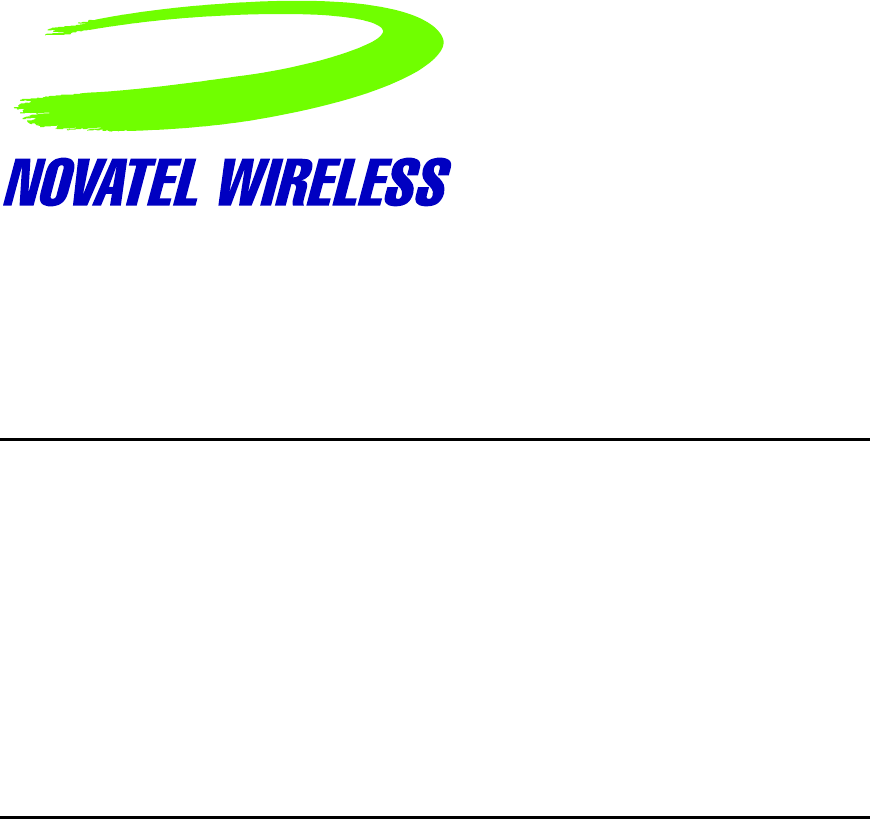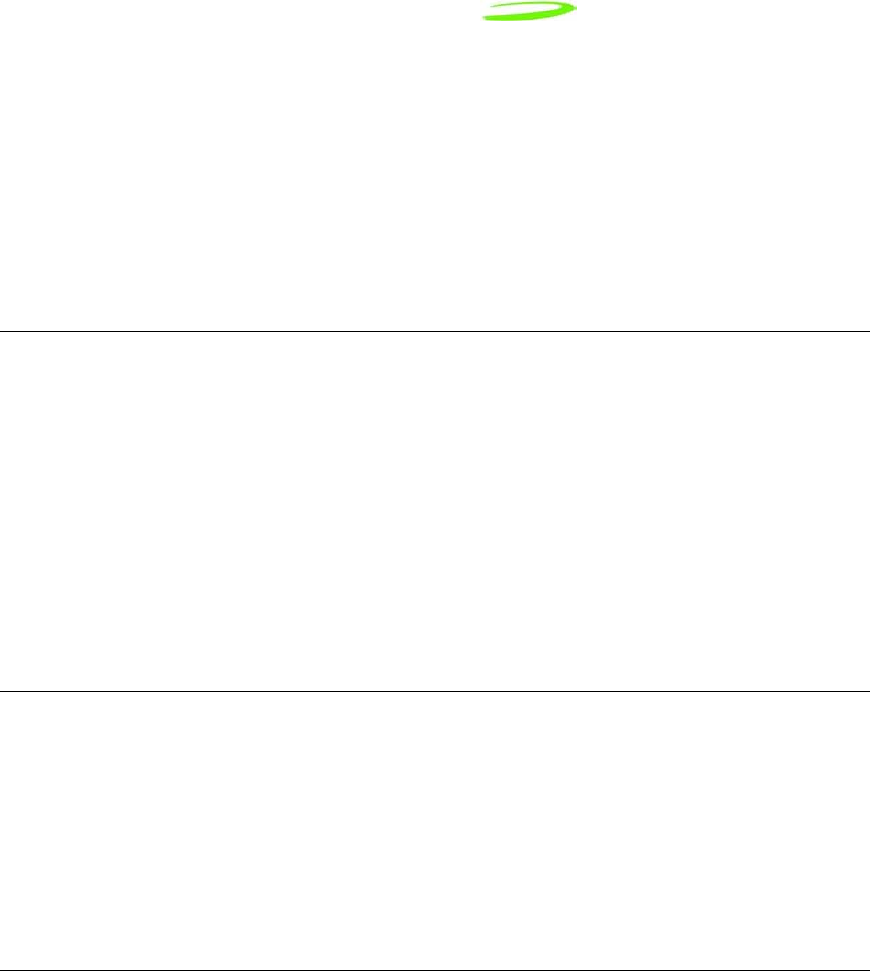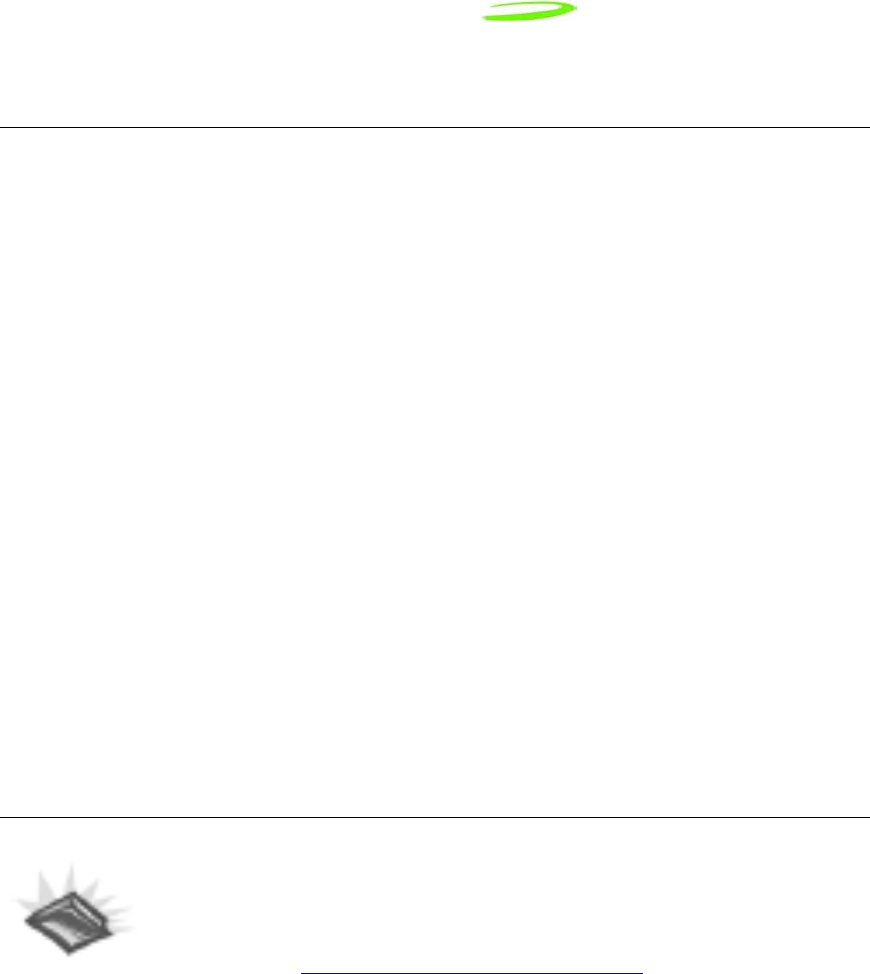Inseego NVWE362 Cellular/ PCS GSM/ EDGE/ WCDMA/ CDMA and 700 MHz LTE Module User Manual
Novatel Wireless Inc Cellular/ PCS GSM/ EDGE/ WCDMA/ CDMA and 700 MHz LTE Module Users Manual
Inseego >
Contents
Users Manual

10/26/2010 1 of 6
Novatel Wireless, Inc.
PCI Express Mini-card
User Guide – Expedite E362
Version 2.0

10/26/2010 2 of 6
Notice: Restricted Proprietary Information
© Copyright Novatel Wireless, Inc. (2010)
The information contained in this document is the exclusive property of Novatel Wireless, Inc. All
rights reserved. Unauthorized reproduction of this manual in any form without the expressed
written approval of Novatel Wireless, Inc. is strictly prohibited. This manual may not, in whole or in
part, be copied, reproduced, translated, or reduced to any electronic or magnetic storage medium
without the written consent of a duly authorized officer of Novatel Wireless Inc.
The information contained in this document is subject to change without notice and should not be
construed as a commitment by Novatel Wireless Inc. unless such commitment is expressly given
in a covering document.
Novatel Wireless Inc. makes no warranties, either expressed or implied, regarding this document,
its merchantability, or its fitness, for any particular purpose.
Printed and produced in United States of America.
Document Revision History
Rev. Date Brief Description of Change Originator Approved by
1.0 September
29, 2010 Initial Draft Todd Gallagher
2.0 October 26,
2010 Updates based on TCB review. Todd Gallagher

Novatel Wireless Inc.
Version 2.0
10/26/2010 3 of 6
Integrator Design Elements: Antennas
Antenna
Host Antenna Requirements
When designing the antenna system for the E362 the gain of the host antenna must not exceed
the following:
LTE (700MHz) Band: 9.92dBi
Cell (800MHz) Band: 7.42dBi
PCS (1900MHZ) Band: 3.0dBi

Novatel Wireless Inc.
Version 2.0
10/26/2010 4 of 6
E362 Regulatory Notice
Safety Warning
The E362 may not be used in an environment where radio frequency equipment is prohibited or
restricted in its use. This includes aircraft/airports, hospitals, and other sensitive electronic areas.
Do not operate RF devices in an environment that may be susceptible to radio interference
resulting in danger, specifically:
• Areas where prohibited by the law
Follow any special rules and regulations and obey all signs and notices. Always
turn off the host device when instructed to do so, or when you suspect that it may
cause interference or danger.
• Where explosive atmospheres may be present
Do not operate your modem in any area where a potentially explosive
atmosphere may exist. Sparks in such areas could cause an explosion or fire
resulting in bodily injury or even death. Be aware and comply with all signs and
instructions.
• Users are advised not to operate the modem while at a refueling point or service
station.
Users are reminded to observe restrictions on the use of radio equipment in fuel
depots (fuel storage and distribution areas), chemical plants or where blasting
operations are in progress.
• Areas with a potentially explosive atmosphere are often but not always clearly
marked.
Potential locations can include gas stations, below deck on boats, chemical
transfer or storage facilities, vehicles using liquefied petroleum gas (such as
propane or butane), areas where the air contains chemicals or particles, such as
grain, dust or metal powders, and any other area where you would normally be
advised to turn off your vehicle engine.
• Near Medical and life support equipment
Do not operate your modem in any area where medical equipment, or life support
equipment may be located, or near any equipment that may be susceptible to
any form of radio interference. In such areas, the host communications device
must be turned off. The modem may transmit signals that could interfere with this
equipment.
• On an aircraft, either on the ground or airborne
In addition to FAA requirements, many airline regulations state that you must
suspend wireless operations before boarding an airplane. Please ensure that the
host device is turned off and your modem is removed from the card slot prior to
boarding aircraft in order to comply with these regulations. The modem can
transmit signals that could interfere with various onboard systems and controls.
• While operating a vehicle
The driver or operator of any vehicle should not operate a wireless data device.
Doing so will detract from the driver or operator's control and operation of that
vehicle. In some countries, operating such communication devices while in
control of a vehicle is an offence.

Novatel Wireless Inc.
Version 2.0
10/26/2010 5 of 6
Under extended operation the E362 modem will generate a noticeable amount of heat. Like all
PC Cards, the modem generates heat during normal operation and will be heated by the host
computer. For this reason it is recommended that after extended periods of operation, prior to
removal and handling, you allow the modem to cool down.
FCC (Federal Communication Commission)
The E362 is compliant to the relevant sections of the FCC rules:
• FCC CFR47 Part 2 (General Rules and Regulations, RF Exposure Evaluation)
• FCC CFR47 Part 15 (All Radio Frequency Devices)
• FCC CFR47 Part 24 (Narrow and wideband PCS modules)
• FCC CFR47 Part 22 (Cellular Service)
• FCCCFR47 Part 27 (Wireless Communications Services)
Labeling Notice for End Use Products
For any end use product that the Novatel E362 modem is used in, a label containing the following
information must be placed visibly on the outside of the product.
This device contains FCC ID: PKRNVWE362 and IC: 3229B-E362
All instructions relating to the integration of the module described on the FCC Grant notes must
be followed.
Radio Frequency Exposure Requirements
Per §2.1091 of the FCC rules, embedded modules are defined as “mobile devices”
At least 20cm (8 inches) of separation between the antenna and the users body must be
maintained at all times. If this device is intended for use in a portable device, you (the integrator)
are responsible for separate approval to satisfy the SAR (RF Exposure) requirements of FCC
Part 2.1093 and Industry Canada RSS-102/Safety Code 6.

Novatel Wireless Inc.
Version 2.0
10/26/2010 6 of 6
Federal Communications Commission Notice (FCC—United States)
This equipment has been tested and found to comply with the limits for a Class B digital device,
pursuant to Part 15 of the FCC Rules. These limits are designed to provide reasonable protection
against harmful interference in a residential installation. This equipment generates, uses and can
radiate radio frequency energy and, if not installed and used in accordance with the instructions,
may cause harmful interference to radio communications.
However, there is no guarantee that interference will not occur in a particular installation. If this
equipment does cause harmful interference to radio or television reception, which can be
determined by turning the equipment off and on, the user is encouraged to try to correct the
interference by one or more of the following measures:
• Reorient or relocate the receiving antenna.
• Increase the separation between the equipment and receiver.
• Contact your service provider for help.
Notice to Consumers: Changes or modifications made to this equipment not expressly approved
by Novatel Wireless may void the FCC authorization to operate this equipment.
This device complies with Part 15 of the FCC Rules and with Industry Canada ICES-003.
Operation is subject to the following two conditions:
(1) this device may not cause harmful interference, and
(2) this device must accept any interference received, including interference that may
cause undesired operation.
Technical Support Contacts
WWW: http://www.nvtl.com/support/index.html
Email: support@novatelwireless.com